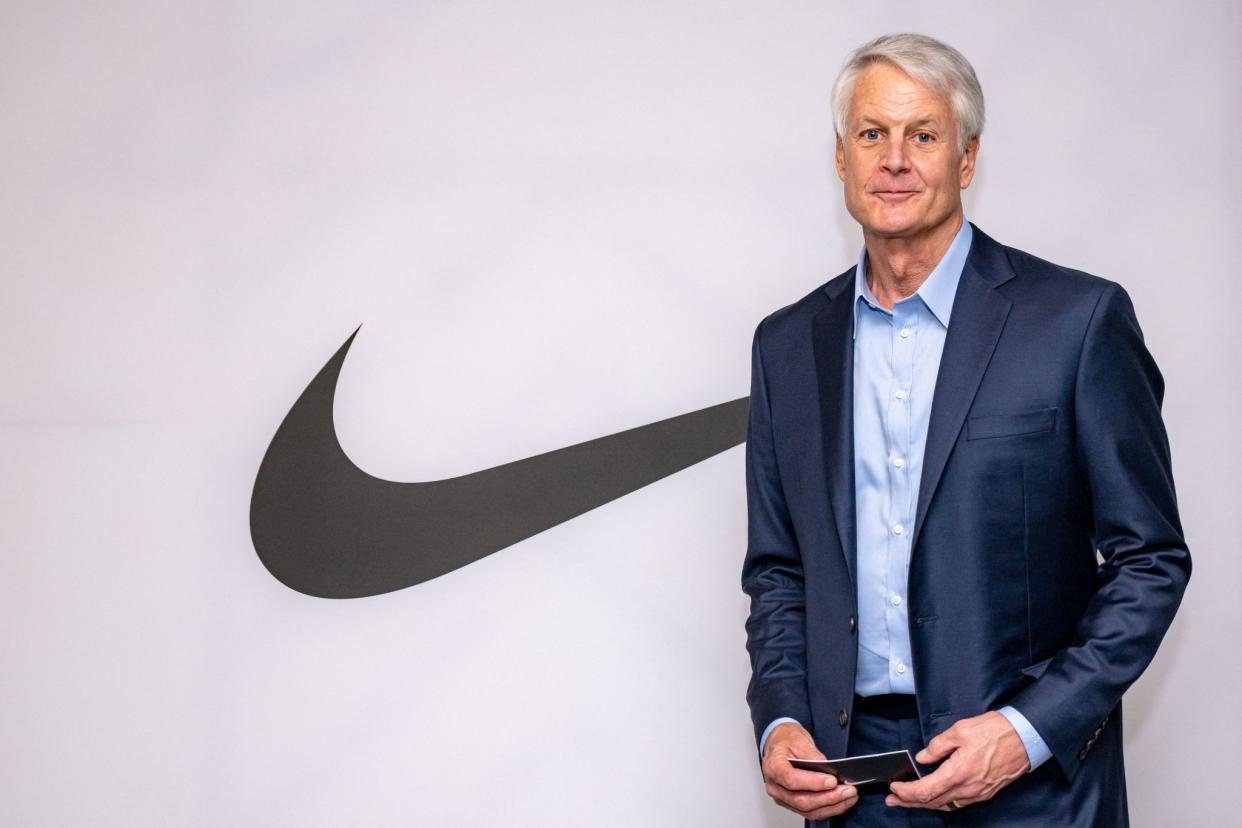Nike’s CEO is under pressure to innovate as market cap falls by $24 billion

People waiting for Nike’s big return to form will have to wait a while longer.
The sports-gear maker’s shares fell as much as 18% on Friday after it said it expects revenue to decline in the mid-single-digits this fiscal year, which began this month, in contrast to the modest 2% growth Wall Street was expecting. That decline erased $24 billion of its market capitalization.
The paltry numbers, even worse than last quarter’s, will tighten the vise around Nike CEO John Donahoe as he seeks to restore the company’s culture of innovation, an ethos it will need as nimbler rivals like Deckers’ Hoka, On Running, Alo, Vuori, and New Balance chip away at its market share in the key running and apparel categories.
Donahoe, a former management consultant who has led tech giants like eBay and ServiceNow, but never a consumer products company, became Nike’s CEO in 2020 after joining the board a decade ago. He conceded this spring that Nike’s innovation cadence had waned, pointing the finger at the rise of remote work.
In recent years, Nike has shifted more of its focus from cutting-edge footwear for serious athletes to lifestyle clothing and shoes; Nike executives blamed the slowdown in its most recent quarter in part on lifestyle brands, including Air Force 1 and Dunk. In an interview with the Wall Street Journal earlier this year, the CEO admitted Nike has lost its “sharp edge” in sports and would have to reestablish its “disruptive innovation pipeline.”
That strategic shift has left an opening for newer brands to swoop in, and has also given established brands like Brooks, Hoka, and New Balance more room to go after the serious runner market. Last year, New Balance’s revenue rose 23%, while Hoka’s sales rose 14%.
In a research note published Friday, TD Cowen analyst John Kernan wrote that Nike must “aim to accelerate innovation cycles to get relevant performance and lifestyle newness into the marketplace, and become a nimbler organization.” Nike has also been slammed for relying too much on trotting out old models and not coming up with new product as quickly as it once did.
Many of Nike’s recent problems have resulted from unforced errors made by Donahoe. In addition to the overemphasis on lifestyle products to the detriment of items focused on performance, the CEO made a major strategic error by exiting one-third of its retail partners in recent years and selling less merchandise to chains like Foot Locker, Macy’s, and DSW, betting it could sell items more efficiently and profitably via its own stores and website. The online boom during the pandemic seems to have tricked Donahoe into believing e-commerce would largely replace the retail partners in a permanent way, but that didn’t pan out, and Nike has since reversed some of its focus back to retailers.
Donahoe was hired originally to turn Nike into something of a tech company, with e-commerce and apps at the center of its strategy. But ultimately, Nike can only succeed by turning out boundary-pushing products, something that is impossible to do immediately. “A comeback at this scale takes time,” chief financial officer Matthew Friend warned investors during Nike’s call with analysts on Thursday.
So Donahoe’s big challenge—and his top priority—will be to restore a culture of innovation, its secret sauce for decades, at a stagnating company reeling from layoffs, if it wants to stem market share losses. “The activewear giant could be turning its core shoppers away due to lack of newness,” Bloomberg Intelligence analyst Poonam Goyal wrote in a research note.
If Donahoe fails to reignite Nike's innovation culture, its customers will continue to look elsewhere for that newness.
This story was originally featured on Fortune.com
